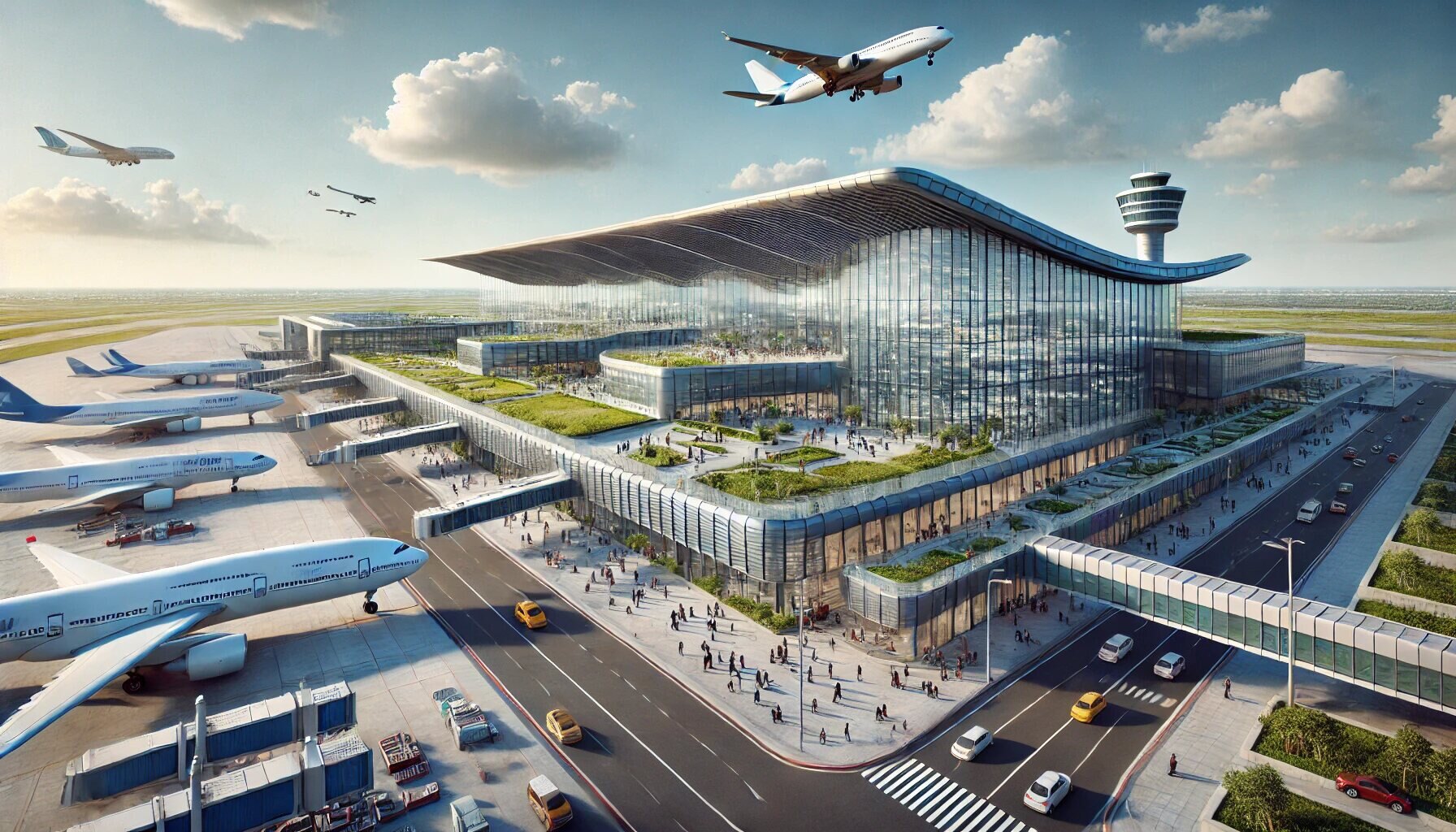Friday, June 27, 2025
As international air traffic continues to surge past pre-pandemic levels in 2025, several airports are emerging as key growth leaders. These airports are expanding flights, introducing more routes, and significantly increasing their seating capacity to stay ahead of growing demand. The aviation industry has moved beyond merely recovering; it is now focused on robust expansion, with Asian and North American hubs leading the way with infrastructure investments, new airline routes, and tapping into new demand.
The growth of these airports is evident, with global rankings set to shift in the coming years as they accommodate growing numbers of travelers. Below is a list of the world’s 10 fastest-growing airports in 2025, based on year-over-year seat capacity increases from May 2024 to May 2025.
1. Guangzhou Baiyun International Airport (CAN)
Seats Added: 407,370 | Growth: +10.8%
Guangzhou Baiyun International Airport (CAN) leads the world in growth, adding more than 400,000 seats in the last 12 months. The airport’s total seating capacity reached 4.18 million in May 2025, continuing to solidify its position as one of China’s key air hubs. This expansion has been driven by an increase in both domestic traffic and a rapidly recovering international market.
China Southern Airlines (CZ) has played a crucial role in the expansion, adding new long-haul connections to Europe and North America, alongside boosting domestic routes to second-tier cities. Low-cost carriers like 9 Air and foreign airlines returning to the South China market have also contributed to this growth.
Guangzhou’s location near important economic regions in Southern China and Southeast Asia makes it an ideal launchpad for both short and medium-range routes, adding to its appeal as a growing international aviation hub.
2. Hong Kong International Airport (HKG)
Seats Added: 404,053 | Growth: +15.0%
After a period of slower growth due to travel restrictions and geopolitical tensions, Hong Kong International Airport (HKG) has made a remarkable comeback, with a 15% increase in seating capacity in 2025. The airport ranks as the second-fastest growing in the world, largely driven by the aggressive network rebuilding efforts of Cathay Pacific, which has increased its long-haul flights to Europe and North America.
HK Express, Hong Kong’s low-cost carrier, is also expanding regional routes to popular destinations such as Thailand, Korea, and Japan, contributing to the airport’s growth.
Infrastructural improvements, including the construction of a third runway and electronic immigration clearance, have boosted capacity and efficiency, ensuring smoother operations. As mainland China reopens, Hong Kong is once again positioned as a leading international gateway.
3. Shanghai Pudong International Airport (PVG)
Seats Added: 353,694 | Growth: +9.4%
Shanghai Pudong International Airport (PVG) remains a central player in China’s global air strategy. The airport saw a year-to-year increase of around 354,000 seats, bringing its total seating capacity to over 4.1 million in May 2025. The city is a major hub for both domestic and international travel.
China Eastern Airlines has increased its trans-Pacific and European services, while foreign airlines like Lufthansa, Emirates, and Singapore Airlines have returned to the airport with additional frequencies. Shanghai Pudong’s dual role as a transit and cargo hub gives it an edge over many competitors.
With growing visa-free transit facilities and initiatives to bring back international business traffic, Shanghai is increasingly becoming a favorite for global travelers.
4. Hyderabad Rajiv Gandhi International Airport (HYD)
Seats Added: 339,828 | Growth: +25.6%
Hyderabad’s Rajiv Gandhi International Airport (HYD) has posted the largest percentage growth among the top 10 airports, with a 25.6% increase in seating capacity. This growth, which equates to 339,828 additional seats, highlights Hyderabad’s rise as a global gateway in India.
The city’s tech boom, growing middle class, and increasing corporate travel have driven the demand for air travel. IndiGo, India’s largest airline, has expanded both domestic and international flights from Hyderabad, including new routes to the Middle East and Southeast Asia. Additionally, Emirates, Etihad, and Qatar Airways have added flights, reflecting the rising demand for travel between the Gulf and India.
With ongoing expansions, including a new runway and terminal enhancements, Hyderabad is poised for further growth well into the next decade.
5. Phoenix Sky Harbor International Airport (PHX)
Seats Added: 326,042 | Growth: +13.2%
Phoenix Sky Harbor International Airport (PHX) is the fastest-growing major airport in North America in 2025, with a 13.2% increase in seats compared to the previous year. With nearly 2.8 million scheduled seats in May, Phoenix is expanding beyond its traditionally domestic focus.
American Airlines has launched new domestic routes from PHX to secondary markets, while international expansion is led by new routes to Canada and Mexico. Low-cost carriers like Southwest Airlines and Frontier Airlines have also added capacity, serving the growing demand from the Arizona population and visitors from nearby states.
Phoenix is becoming a prominent gateway city in the U.S. Southwest, leveraging its location and increasing tourist appeal.
6. Bengaluru Kempegowda International Airport (BLR)
Seats Added: 324,731 | Growth: +16.9%
Bengaluru’s Kempegowda International Airport (BLR) has seen impressive growth, with a 16.9% increase in seats and 324,731 additional seats in May 2025. The city’s status as India’s Silicon Valley has fueled demand for both business and holiday travel.
IndiGo, Vistara, and Air India have introduced more capacity on both domestic and international routes to destinations such as Singapore, Dubai, and Frankfurt. The commissioning of Terminal 2 has also allowed the airport to handle widebody aircraft and streamline the flow of both domestic and international passengers.
With Air India’s transformation under the Tata Group and growing interest from foreign carriers, Bengaluru is poised to become one of India’s major international hubs in the coming years.
7. San Francisco International Airport (SFO)
Seats Added: 318,906 | Growth: +12.4%
San Francisco International Airport (SFO) continues to be a key transpacific and transcontinental hub, adding 318,906 seats and posting a 12.4% growth year-over-year. SFO’s growth story is led by the recovery of Asia-Pacific travel, particularly to China, Japan, and India.
United Airlines has resumed services to major Asian markets, while international carriers like Singapore Airlines, ANA, and Cathay Pacific are increasing frequencies. San Francisco benefits from a mix of tech-savvy business travel and high-revenue leisure traffic, with investments in infrastructure such as runway refurbishments and expanded gate space helping fuel this growth.
8. Kuala Lumpur International Airport (KUL)
Seats Added: 306,167 | Growth: +10.7%
Kuala Lumpur International Airport (KUL) is experiencing strong recovery, with an additional 306,167 seats added in 2025. Malaysia Airlines, Batik Air, and AirAsia lead the charge, reinforcing Kuala Lumpur’s role as a Southeast Asian transit hub and low-cost gateway.
The resurgence of Chinese, Indian, and Middle Eastern travelers, coupled with increasing outbound demand from Malaysians, supports the airport’s growth. Additionally, ongoing terminal modernization and tourist visa-friendly policies are boosting capacity and attracting new passengers.
9. Bangkok Don Mueang International Airport (DMK)
Seats Added: 286,260 | Growth: +21.8%
Don Mueang International Airport (DMK) in Bangkok ranks highest in Southeast Asia in terms of percentage growth, with an incredible 21.8% increase in seats. As a hub for low-cost carriers like Nok Air and Thai AirAsia, DMK is benefiting from a boom in regional travel within Southeast Asia and China.
Thailand’s emphasis on low-cost travel via secondary airports has paid off, with Don Mueang seeing strong demand from travelers in Vietnam, Malaysia, and Laos.
10. Osaka Kansai International Airport (KIX)
Seats Added: 272,563 | Growth: +18.4%
Osaka Kansai International Airport (KIX) rounds out the list with 272,563 additional seats, reflecting a solid 18.4% increase. The airport’s growth is driven by the return of inbound tourism to Japan, particularly from South Korea, Taiwan, and Southeast Asia.
With Osaka hosting the 2025 World Expo, the airport is benefiting from enhanced infrastructure investments, solidifying its position as the gateway to Western Japan.
A Year of Global Takeoff
From the mega hubs of Southern China to the IT centers of India and North America’s desert gateways, the world’s fastest-growing airports are as diverse as the travelers they serve. These airports are not just recovering but are actively reshaping international aviation demand trends. As airlines increase capacity and invest in these cities, expect them to continue climbing in the international rankings in the years to come.
«Enjoyed this post? Never miss out on future posts by following us»



